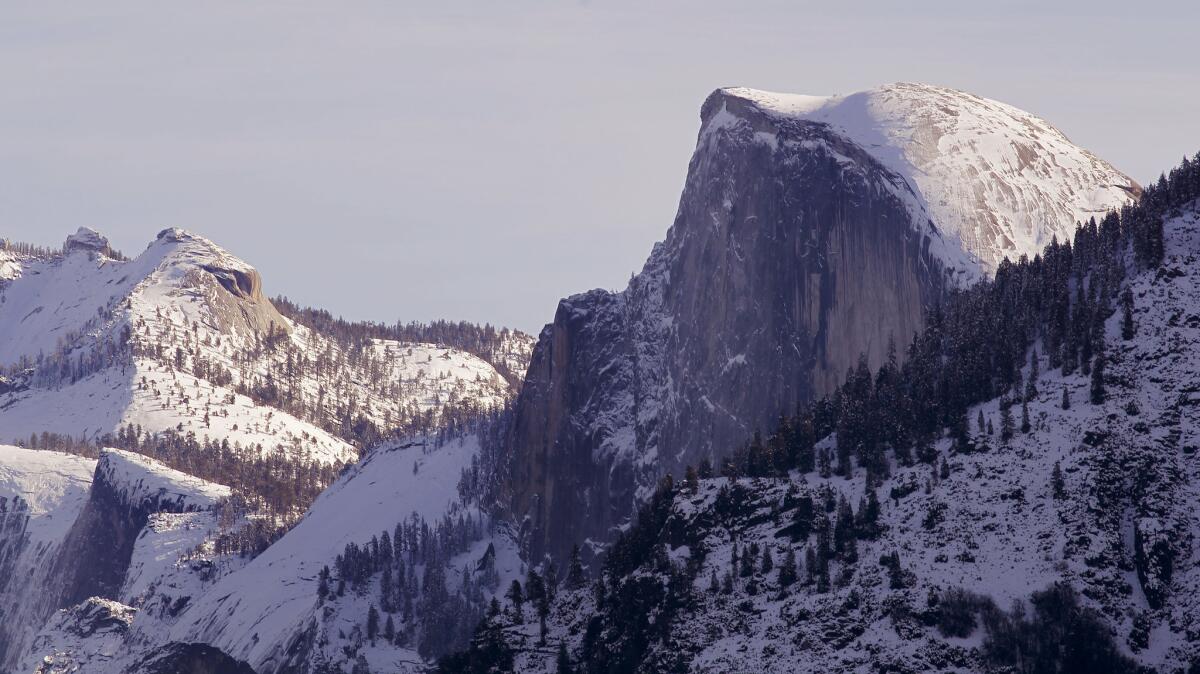First manual measurement of Sierra snowpack to occur next week

The winter’s first manual measurement of the Sierra Nevada snowpack will take place next week, state officials said Tuesday, eager for any signs of relief from one of California’s worst droughts in a century of record-keeping.
The snowpack is crucial to the state water supply because it replenishes reservoirs during warmer months.
“We rely on the snowpack,” said Doug Carlson, a state Department of Water Resources spokesman. “It provides 30% of the water used in the late spring and early summer.”
Recent storms brought several feet of snow to parts of the Sierra and elsewhere. But California will need a steady supply of it over the coming months to make a lasting difference in the depleted snowpack.
“Abundant snowfall in the mountains would be an important component of a drought-ending scenario,” officials with the water resources department said in announcing the Dec. 30 manual check. “Surface reservoirs are unlikely to be recharged to normal levels unless precipitation and snowpack this water year are both well above historical averages.”
The snowpack is constantly monitored by electronic sensors at 104 points across the Sierra, and manual checks are conducted once a month through May 1.
One of the manual measurements will take place at the Phillips Station snow course off California 50 near Echo Summit, about 90 miles east of Sacramento. Results of the 11 a.m. survey should be available to the public by early afternoon, officials said.
Electronic readings of the snowpack showed it at 54% for Dec. 23; it had been at 40% on Dec. 12, according to state data.
Because this has been the warmest year on record in California, much of the snow is melting before it can accumulate into a healthy snowpack, Carlson said.
Last winter’s snowpack was essentially depleted by late spring, according to state data.
The water year that ended Sept. 30 was the third-driest period on record, state officials said. Only 1924 and 1977 recorded less statewide rain. It was the driest year ever in the San Joaquin Valley, the Central Coast and Southern California.
The water resources department measures precipitation at eight stations in the Northern Sierra, which had recorded 22.4 inches of rain as of Tuesday morning — or 7 inches more than normal for the date. Water experts have said the state would need about 75 inches of rain on the eight-station index by the end of the water year, Sept. 30, to end the drought.
“These extraordinarily dry and warm conditions strengthened the drought’s hold on California, and reservoir storage continued to fall through most of 2014,” the agency said in a news release Tuesday.
For example, the state’s largest reservoir, Shasta Lake, normally holds nearly 2.8 million acre-feet of water in late December, but as of Tuesday it had only 62% of that amount, or about 1.7 million acre-feet.
“It indicates we have a long way to go before we can say we’re anywhere near ending the drought,” Carlson said.
Recent storms raised the level from just over 1 million acre-feet on Nov. 29, the lake’s lowest in 25 years, officials said.
Carlson said officials would have a better idea of where California stands drought-wise at the end of February — halfway through the winter rain season.
“The end of the midpoint is a good indicator,” he said.
The year’s rainfall will determine whether the allocation to the State Water Project’s 29 customers will be changed in coming months, officials said. Currently, the 29 contractors, which represent water agencies throughout the state, are scheduled to receive 10% of the amount they requested for 2015; in 2014, they received 5%.
The contractors had requested 4.2 million acre-feet for 2015. One acre-foot can meet the needs of a typical California family of four for a year.
amanda.covarrubias@latimes.com
Twitter: @amcovarrubias
More to Read
Start your day right
Sign up for Essential California for news, features and recommendations from the L.A. Times and beyond in your inbox six days a week.
You may occasionally receive promotional content from the Los Angeles Times.







